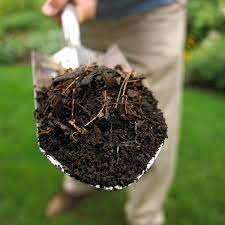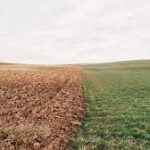
How to Make Compost at Home
What is Compost?
Compost is an organic material that can be added to soil to help plants grow. It is a mixture of ingredients used to fertilize and improve the soil. It is commonly prepared by decomposing plant and food waste and recycling organic materials. Food scraps and yard waste together currently make up more than 30 percent of what we throw away, and could be composted instead. Making compost keeps these materials out of landfills where they take up space and release methane, a potent greenhouse gas.
What is Composting?
Technically, composting is the decomposition, in a natural way, of organic material such as plant and food waste. This is executed by fungi, bacteria, worms, and more organisms with the help of oxygen under controlled conditions. Composting is practiced by gardeners and non-gardeners alike for a long time now. Compost is pretty much decomposed organic matter. So composting is what happens as the organic matter breaks down into a soil-like state. But compost is not like fertilizer, which feeds plants; it's more like a soil conditioner.Basic Ingredients for Composting
All composting requires three basic ingredients:- Browns - This includes materials such as dead leaves, branches, and twigs.
[caption id="attachment_2918" align="alignright" width="275"]
 Compost ingredients[/caption]
Compost ingredients[/caption] - Greens - This includes materials such as grass clippings, vegetable waste, fruit scraps, and coffee grounds.
- Water - Having the right amount of water, greens, and browns is important for compost development.
What To Compost
Things that are compostable: fruits and vegetables, tea bags, nutshells, non-greasy food scraps (including rice, pasta, and bread), flowers, branches, paper bags, coffee grounds and filters, eggshells, shredded newspaper, cardboard, paper, grass clippings, houseplants, hay, fur, dryer and vacuum lint, cotton and wool rags, wood chips, sawdust, and leaves.What Not To Compost and Why
- Black walnut tree leaves or twigs - Releases substances that might be harmful to plants
- Coal or charcoal ash - Might contain substances harmful to plants
- Dairy products (e.g., butter, milk, sour cream, yogurt) and eggs* - Create odor problems and attract pests such as rodents and flies
- Diseased or insect-ridden plants - Diseases or insects might survive and be transferred back to other plants
- Fats, grease, lard, or oils* - Create odor problems and attract pests such as rodents and flies
- Meat or fish bones and scraps* - Create odor problems and attract pests such as rodents and flies
- Pet wastes (e.g., dog or cat feces, soiled cat litter)* - Might contain parasites, bacteria, germs, pathogens, and viruses harmful to humans
- Yard trimmings treated with chemical pesticides - Might kill beneficial composting organisms* Check with your local composting or recycling coordinator to see if these organics are accepted by your community curbside or drop-off composting program.
How to Compost at Home
There are many different ways to make a compost pile; we have provided the following for general reference. Helpful tools include pitchforks, square-point shovels or machetes, and water hoses with a spray head. Regular mixing or turning of the compost and some water will help maintain the compost.Backyard Composting
1. Pick a spot for your compost pile or bin. It should be dry and shady but also near a water source (like your garden hose!)
Location is really important for composting. (That's why people generally opt for some type of bin.) But before you choose a spot, make sure you check with your local community guidelines about where you can set your compost. Once that's out of the way, find a spot with good drainage that's not in direct sunlight. Pro-tip: Don't set up your compost near trees, because they could root into your compost for the water and nutrients — then, you'll end up hurting the roots as you turn the pile. Talk about lose-lose. Also, avoid being too close to a wooden fence, because you don't want to cause the fence to rot.
Once that's out of the way, find a spot with good drainage that's not in direct sunlight. Pro-tip: Don't set up your compost near trees, because they could root into your compost for the water and nutrients — then, you'll end up hurting the roots as you turn the pile. Talk about lose-lose. Also, avoid being too close to a wooden fence, because you don't want to cause the fence to rot.
2. To begin your pile, lay your first brown layer. Then continue to alternate between green and brown layers. (Make sure to shred or chop any big materials.)

Your first and last layers should be brown, especially to mask the odor. If needed, sprinkle water onto your brown layers to make sure they're moist. For instance, green materials include things like coffee grounds, eggshells, fruits and vegetables, grass clippings, hair, etc. Meanwhile, brown materials include things like corncobs, branches, twigs, dead leaves, cardboard, paper, pine needles, sawdust, vegetable stalks, straw, etc.
3. Every few weeks, use a pitchfork (or shovel) to turn your pile. Turn it from the center out, making sure the pile stays moist.

To aerate (introduce air into) your compost pile, you'll have to turn it every few weeks. As you turn it, you can sprinkle it lightly with water as needed to make sure the pile isn't too dry. Remember, the microorganisms need oxygen and water — but you don't want to drown them, either.
Don't be surprised if you see some steam come from the pile as you turn it! Heat is a natural byproduct of decomposition. That means it's working!
4. Once the bottom of your compost pile is a dark and rich brown, it's ready to use!
 Yes! You did it! It's most likely been a few months by now, and what was once a pile of organic materials now looks like dark and rich soil. Talk about a glow-up.
Yes! You did it! It's most likely been a few months by now, and what was once a pile of organic materials now looks like dark and rich soil. Talk about a glow-up.
Indoor Composting
If you do not have space for an outdoor compost pile, you can compost materials indoors using a special type of bin, which you can buy at a local hardware store, gardening supplies store, or make yourself. You can repurpose plastic garbage bins, use wooden shipping pallets to create your own box, or stack cinder blocks to section off your compost bin to name a few options. Chicken wire is also an incredibly popular material for enclosing compost. Otherwise, you can purchase different types of compost bins:
Plastic stationary bin:These bins are best for regular and continuous composting. They have air vents to ensure proper ventilation. Most also come with some sort of a door so that you can easily access and turn the compost.
Rotating or tumbling bin:  These bins are meant to make one batch of compost at a time. You add materials until it's full, then you rotate or tumble the bin (using the handles) every day or two. This way, you're turning the compost more often and speeding up decomposition. Typically, these bins can produce finished compost in five weeks or so.
These bins are meant to make one batch of compost at a time. You add materials until it's full, then you rotate or tumble the bin (using the handles) every day or two. This way, you're turning the compost more often and speeding up decomposition. Typically, these bins can produce finished compost in five weeks or so.
 Remember to tend your pile and keep track of what you throw in. A properly managed compost bin will not attract pests or rodents and will not smell bad. Your compost should be ready in two to five weeks.
Remember to tend your pile and keep track of what you throw in. A properly managed compost bin will not attract pests or rodents and will not smell bad. Your compost should be ready in two to five weeks.
 These bins are meant to make one batch of compost at a time. You add materials until it's full, then you rotate or tumble the bin (using the handles) every day or two. This way, you're turning the compost more often and speeding up decomposition. Typically, these bins can produce finished compost in five weeks or so.
These bins are meant to make one batch of compost at a time. You add materials until it's full, then you rotate or tumble the bin (using the handles) every day or two. This way, you're turning the compost more often and speeding up decomposition. Typically, these bins can produce finished compost in five weeks or so.
 Remember to tend your pile and keep track of what you throw in. A properly managed compost bin will not attract pests or rodents and will not smell bad. Your compost should be ready in two to five weeks.
Remember to tend your pile and keep track of what you throw in. A properly managed compost bin will not attract pests or rodents and will not smell bad. Your compost should be ready in two to five weeks.
4 Benefits of Composting
Backyard composting has many benefits. Not only does it help conserve the environment — it also saves you the money and resources you would otherwise spend on fertilizers.
1. Utilizes Waste to Reduce It
Through composting, people get to utilize plant waste, food and kitchen waste, leaves, lawn clippings, and any other biodegradable waste that can get thrown away otherwise. With this, composting could let you save money for landfill fees. Aside from being beneficial to your finances (since you won’t buy garden soil anymore), compost is a really great soil enricher. It is also easy to make and most of all, it is a great way to reduce waste. So perhaps the best benefit from composting is your ability to turn trash into treasure, keeping trash off the landfills and, in turn, reducing your carbon footprint.
2. Improves Soil Health
Compost is now widely recognized as a helpful tool in replenishing the fertility of the soil without making use of chemical fertilizers. Adding compost to your garden soil improves its health and minimizes pests and plant diseases. Using compost also eliminates the need to use chemical-based fertilizers. Compost has nutrients that plants use in order for them to grow to their fullest potential, like potassium, nitrogen, and phosphorus. Adding compost to your garden soil can also assure you that your garden is supplied with micronutrients such as iron, iodine, cobalt, boron, copper, zinc, molybdenum, and manganese. Moreover, compost, when added to the soil, can improve the soil’s structure. It can improve the capacity of the soil to hold water, thereby increasing erosion control and the permeability of the soil. Composted soil also aids in the reforestation and restoration of wetlands and plant and animal habitats. It remedies the soil that is contaminated with toxic waste.
3. Helps Preserve the Environment
Composting helps us preserve the environment because it reduces our need of using chemical-based fertilizers and soil conditioners. Composted soil also increases the amount of nutrients and beneficial microbes, which can improve plant growth. Since it retains water, compost can prevent soil erosion. The environment at large is greatly benefiting from composting since our organic resources are being recycled while our landfill spaces are being conserved. Aside from increasing the organic matter in the soil, composting also promotes healthy root structure in plants. Compost improves the presence of earthworms and other helpful microorganisms in the soil, which can help balance the soil
ecosystem.
4. Convenient for Any Gardener
You can create compost in many ways, so it’s pretty convenient. One method is to utilize worms, which can yield worm castings that are loaded with nutrients. This practice is called vermiculture. In making your own compost for gardening, you can also improve your ornamental or vegetable garden, improve your lawn, and propagate your own plants. You can say that all in all, composting is an essential part of any true gardener’s experience.
Acknowledgement:
- Aidan Milan (2021): How to Start Composting At Home - Easy Tips and Best Products
- https://ma-northampton.civicplus.com/DocumentCenter/View/15090/How-to-Make-Compost_-Step-By-Step-Guide?bidId=
- Kristin Hunt (2019): What is Composting? Green Matters.
- United States environmental Protection Agency (EPA): Composting At Home.
Tags:compost
Recent Posts
Editor0 Comments
Does Guava Cause Appendicitis?
Editor0 Comments
Heat stress to threaten over 70% of global agriculture by 2045
Tags
africa
agribusiness
agriculture
animal feed
antimicrobial resistance
aquaculture
banana
biofloc tecnology
bird flu
brazil
cassava
cattle
China
climate change
compost
corn
FAO
germany
GMO
gmo corn
greenhouse
hens
IITA
india
kenya
maize
malaysia
mexico
namibia
Nanotechnology
nigeria
palm oil
pork
postharvest losses
potato
rice
rodents
soil
uganda
US
USDA
vertical farming
wheat
world food programme
Yemen



